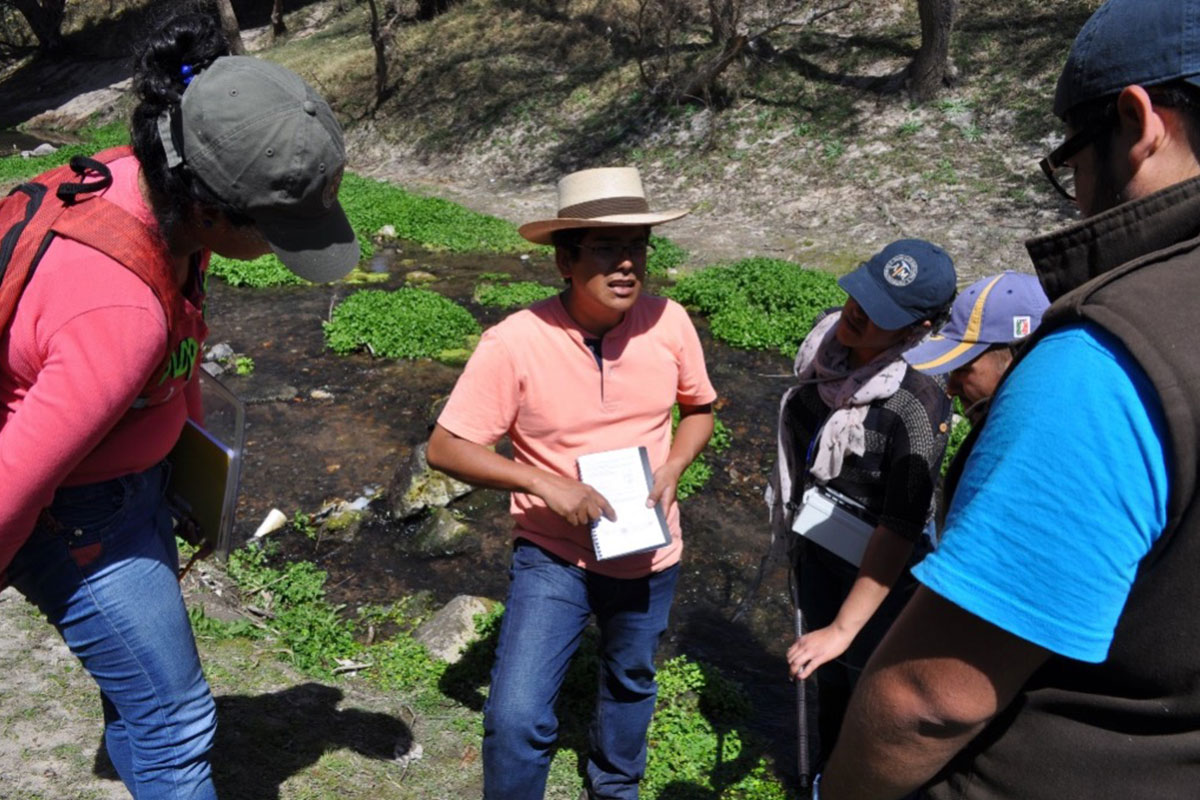
In communities that depend on aquifers for public water supplies, contaminated groundwater sources can affect every part of daily life — from public health, to schooling, to agricultural revenues and long-term environmental impacts. According to new research led by Texas A&M University scientists, the economic costs of fixing groundwater problems by decreasing pumping and treating drinking water are dwarfed by the overall long-term benefits.
The study, recently published in the American Geophysical Union (AGU) GeoHealth journal and in AGU’s prestigious Eos Editor's Highlights, showed that funding water treatment is a worthwhile financial investment that substantially lowers the long- and short-term costs of low-quality water.
The team studied an area in central Mexico where arsenic and fluoride are widely present at concentrations above the drinking water reference values in well water. Falling water tables in such semiarid agricultural regions can be disastrous, driving up energy costs and making the water toxic for human consumption. The scientists used real-world data to simulate future outcomes of various scenarios of water-pumping rates.
“Agriculture has an expansive footprint on the planet; no other industry is as important to the nourishment and growth of humans while simultaneously having the potential to limit human development through negative impacts to the environment,” said Peter Knappett, associate professor in the Texas A&M Department of Geology and Geophysics and lead author of the paper.
“This study explores how aggressive pumping of aquifers in semiarid regions for irrigation depresses economic growth and human development by driving up energy costs and reducing human cognitive abilities from exposure to rising concentrations of the naturally occurring neurotoxins arsenic and fluoride,” he said.
The research found overexploiting aquifers increases human exposure to geogenic neurotoxins. They compared the revenue generated from irrigation to the energy and human development costs of pumping over a 100-year future time period.
“The good news is that the cost of removing these neurotoxins is small compared to the gains from a more productive population owing to greater cognitive abilities,” Knappett said. “The bad news is that without this wide-scale intervention, the total revenue generated by all the crop sales in the region will be smaller than the costs imposed on the population.”
The scientists simulated falling water tables, rising energy costs, increasing concentrations of naturally occurring neurotoxins, decreasing IQ and earnings for people living in the basin, all caused by different rates of pumping by agriculture. For the different pumping scenarios, they calculated both the increase or decrease in revenue for the agriculture sector as well as the net economic gain from increasing or decreasing pumping rates, growing alternative crops and treating drinking water to remove the neurotoxins.
“This research is an important example of the power of international collaborative teams whose members span diverse fields, institutions and non-governmental organizations,” Knappett said. “It was so necessary to this work to have interdisciplinary partners in engineering, public health and agricultural economics as well as our partners in Mexico and the Netherlands. We would have had nothing to write without all of these experts included.”
The team of co-authors includes Paulina Farías, Instituto Nacional de Salud Pública, in Cuernavaca, México; Gretchen Miller, Zachry Department of Civil Engineering at Texas A&M; Jaime Hoogesteger, Wageningen University, in Wageningen, The Netherlands; Horacio Hernandez, Yanmei Li and Isidro Loza-Aguirre, University of Guanajuato, in Guanajuato, México; Genny Carrillo, Itza Mendoza-Sanchez and Taehyun Roh, Texas A&M School of Public Health; Richard Woodward, Department of Agricultural Economics at Texas A&M; Saugata Datta, University of Texas at San Antonio; Yibin Huang, Department of Geology and Geophysics at Texas A&M; and Dylan Terrell, Caminos de Agua, San Miguel de Allende, México.
Previous system-level studies have considered the food, energy and water nexus but have not included public health issues in the analysis.
“Our work is novel and important because it adds the human health layer,” Mendoza-Sanchez explained.
“We found that with no interventions, personal incomes will be ever-more reduced by people’s exposure to higher concentrations of neurotoxins,” Farías added.
Another unique aspect of this study is the geological features of the agricultural basins in central and northern Mexico. Li noted that silicate weathering is the dominant water-rock interaction that accounts for the observed concentrations of major ions, arsenic and fluoride in the groundwater.
“The normal faults act as conduits for rising geothermal waters carrying arsenic into the shallow aquifer that has been historically depressurized by irrigation pumping,” she said. “Based on this study and other work of the investigation group, we have found new buried faults where there are extremely high arsenic and fluoride concentrations.”
“These basins have tectonic origins, silicic volcanic rocks and geological faults that influence water flow and shallow geothermal heat,” Loza-Aguirre said. “The findings of this study can be applied to other similar regions that have not yet committed the same amount of resources in developing their agro-export industry. We quantified the value of groundwater that is left in the ground today for present and future generations to continue to use.”
As global agricultural exports from Mexico continue to intensify the use of Mexico’s water resources, the researchers say it is increasingly critical that decision-makers have access to relevant real-time data regarding the costs and benefits of falling water tables.
“There is a pressing need to consider the external costs this business activity imposes on local rural communities and the long-term socio-economic development of the region as a whole,” Hoogesteger said. “These new insights can inform the development of strategies to redress existing socio-environmental injustices and advance more inclusive development.”
This research was funded in part by a grant from the TAMU-CONACyT program.
Media Contact: Leslie Lee, leslielee@tamu.edu
